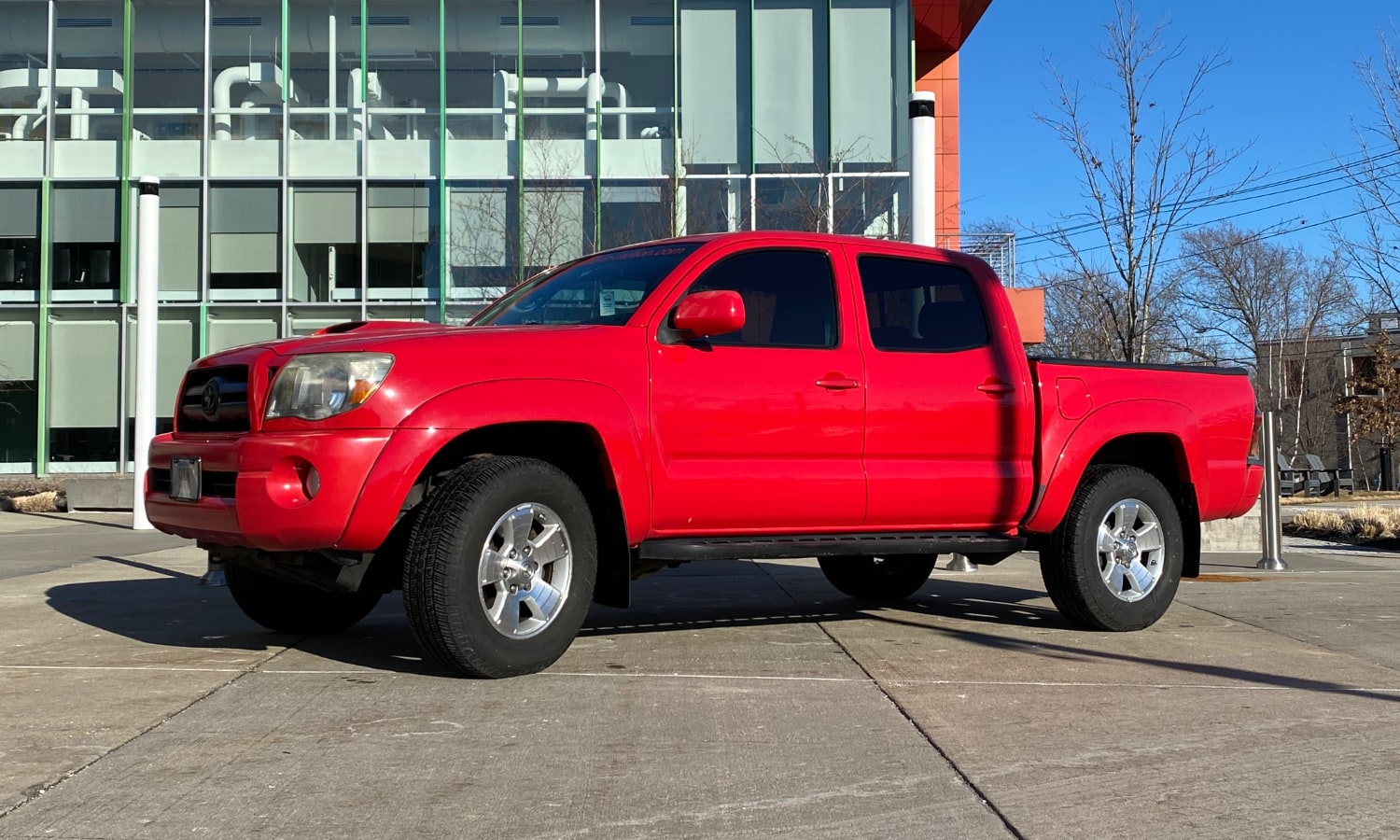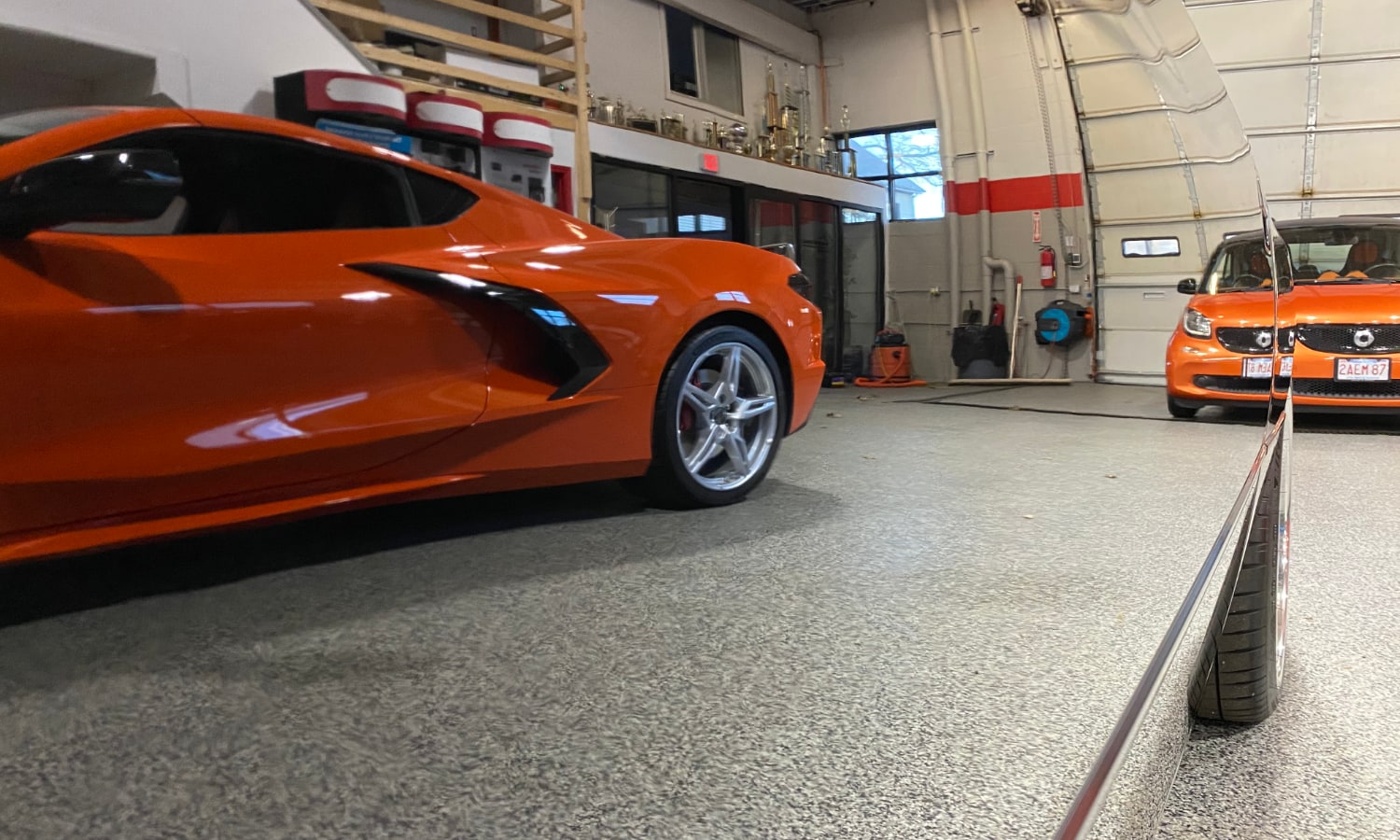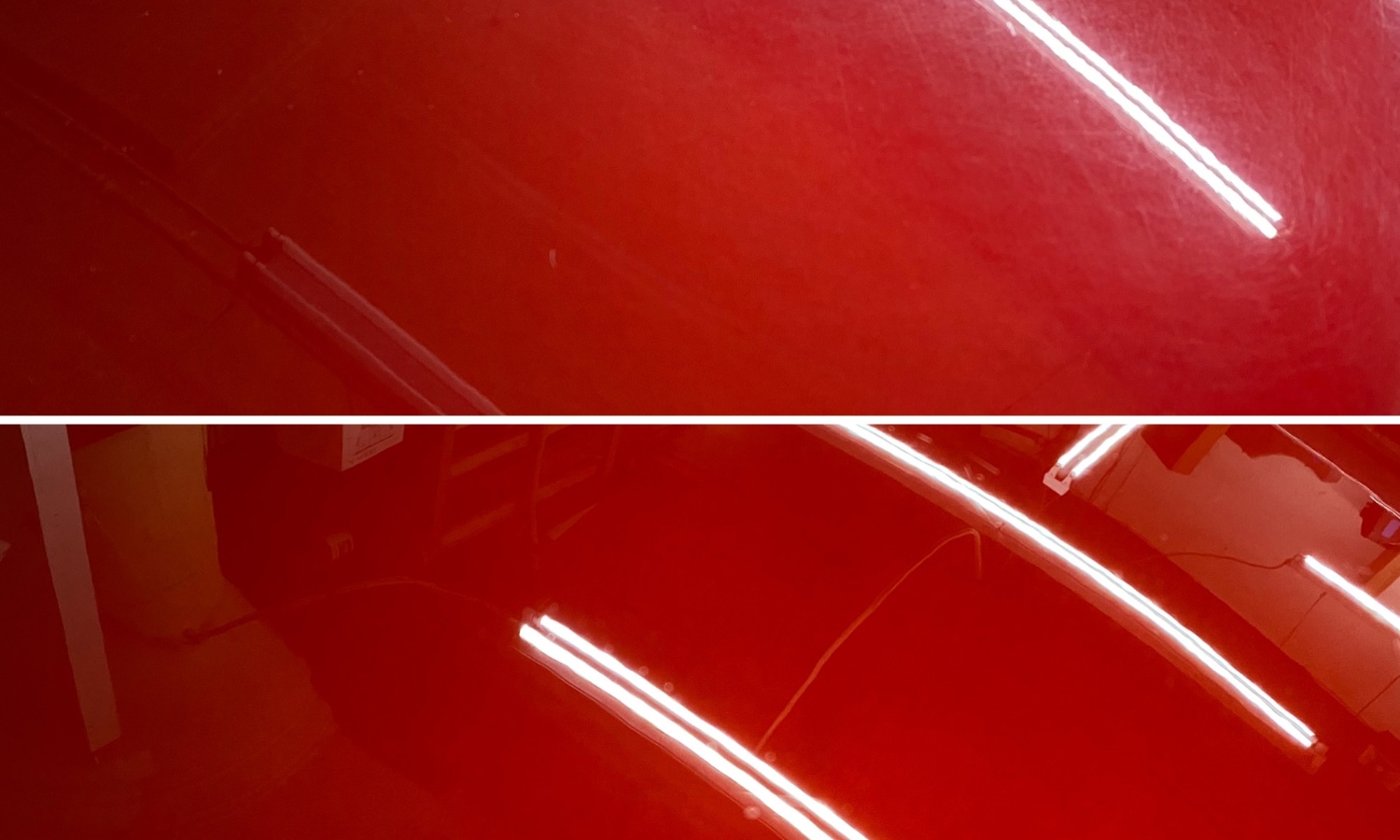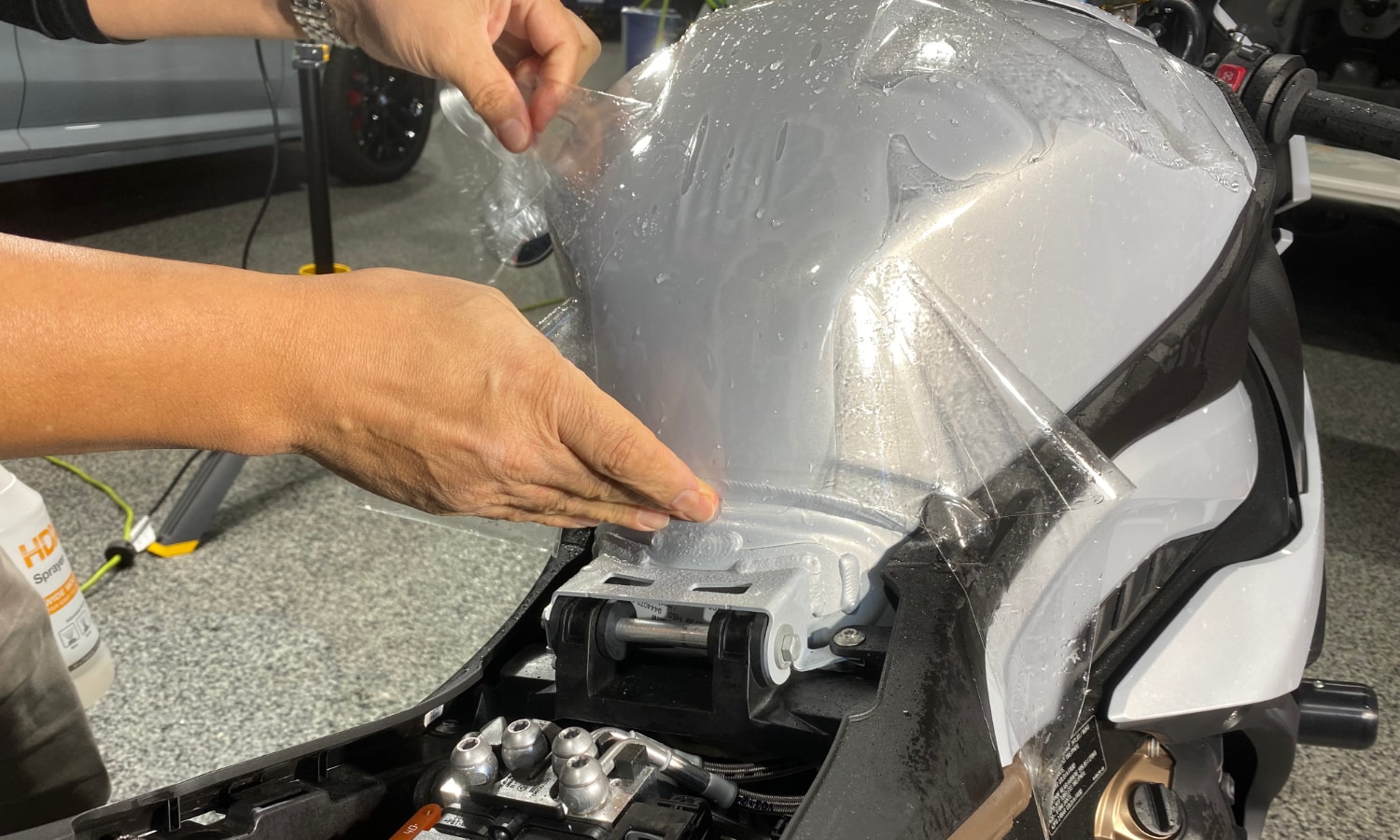
Modern Paint Services
The reason these modern paint services have become so popular in recent years, evolved from the fact that the environmentally friendly, water-based paints used by today’s car manufacturers just don’t have the durability and glossy look of the old lacquer paints. This, combined with modern technology spawned a whole new industry around correcting and protecting your investment. Following is a brief description of our services.
Paint Correction
Paint correction is the strategic approach to getting a vehicle’s paint looking as good as possible while utilizing different combinations of polishing, compounding or even wet-sanding. No matter how new, or how well cared for your vehicle’s paint is, the fine micro-marring that occurs by just wiping the surface will slowly erode that once brilliant, shiny gloss. There are many techniques to proper paint correction and each project requires a different approach. Here are some of the steps we go through before deciding on what strategy is best for your vehicle.
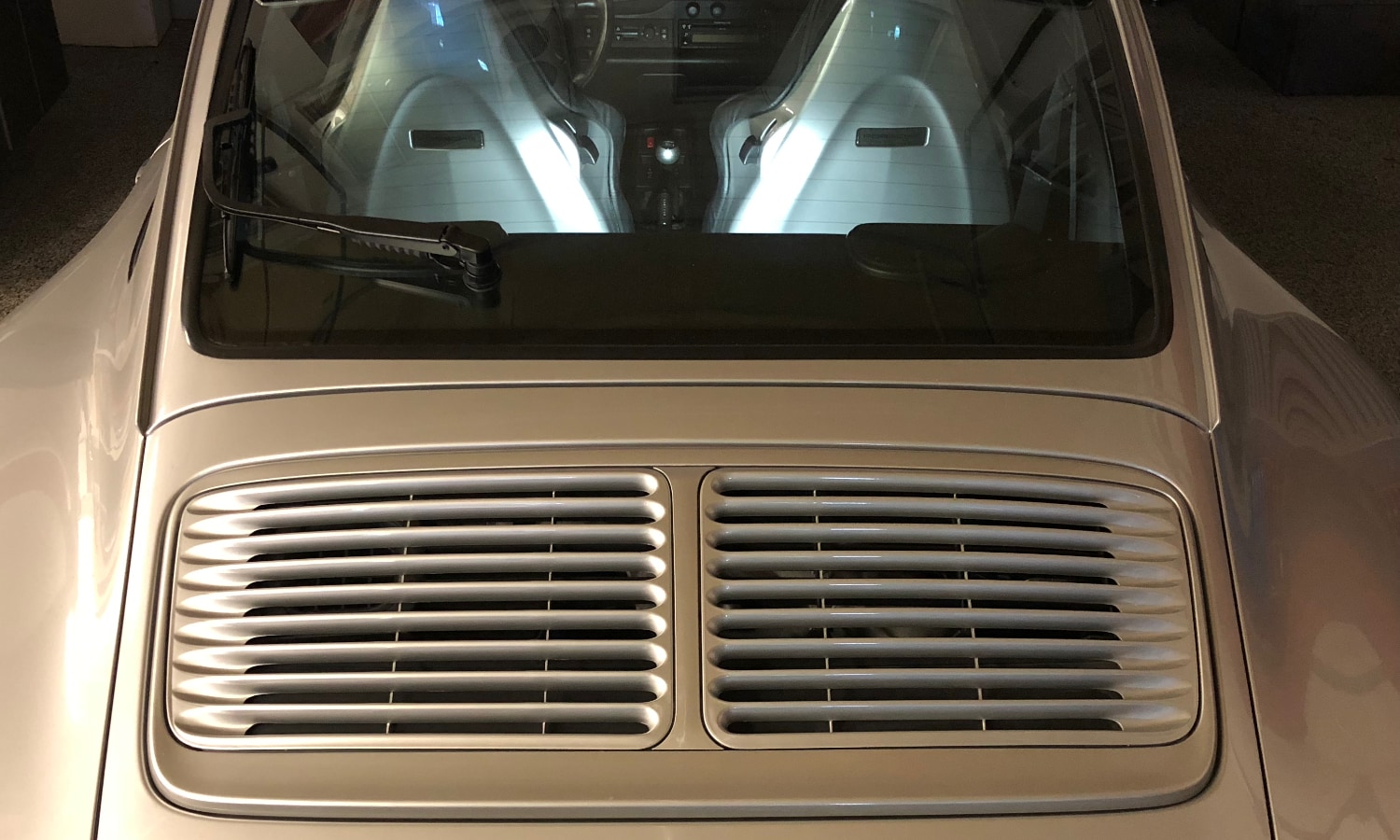
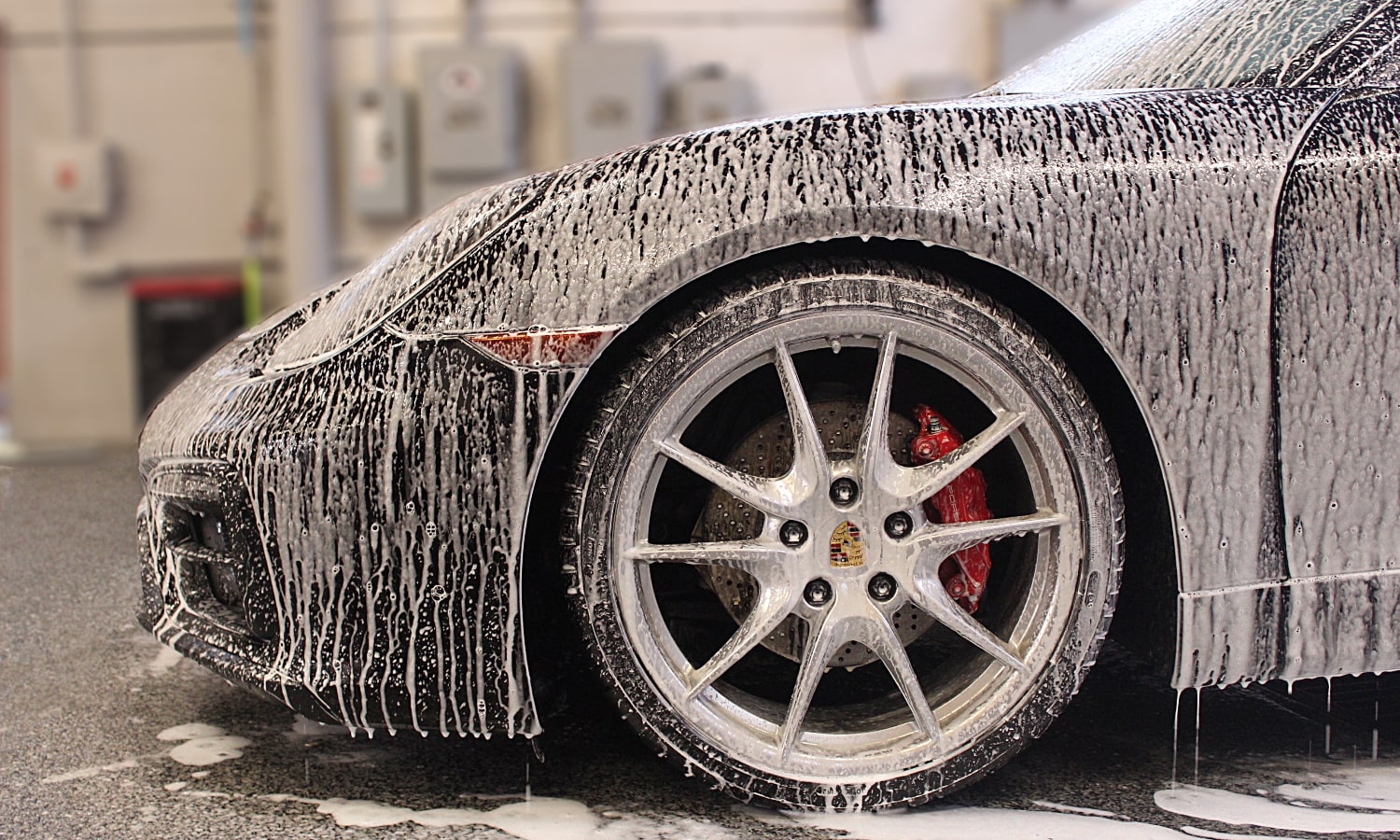
Preliminary Wash
At Car Done every project starts with a thorough hand wash using gentle, pH neutral soaps and soft wash mitts. We only use a high quality, high flow pressure washer with no more than a 25° or 40° nozzle for pre and final rinse. This assures contaminants are rinsed off without the risk of decals, film, emblems or loose trim pieces coming off.
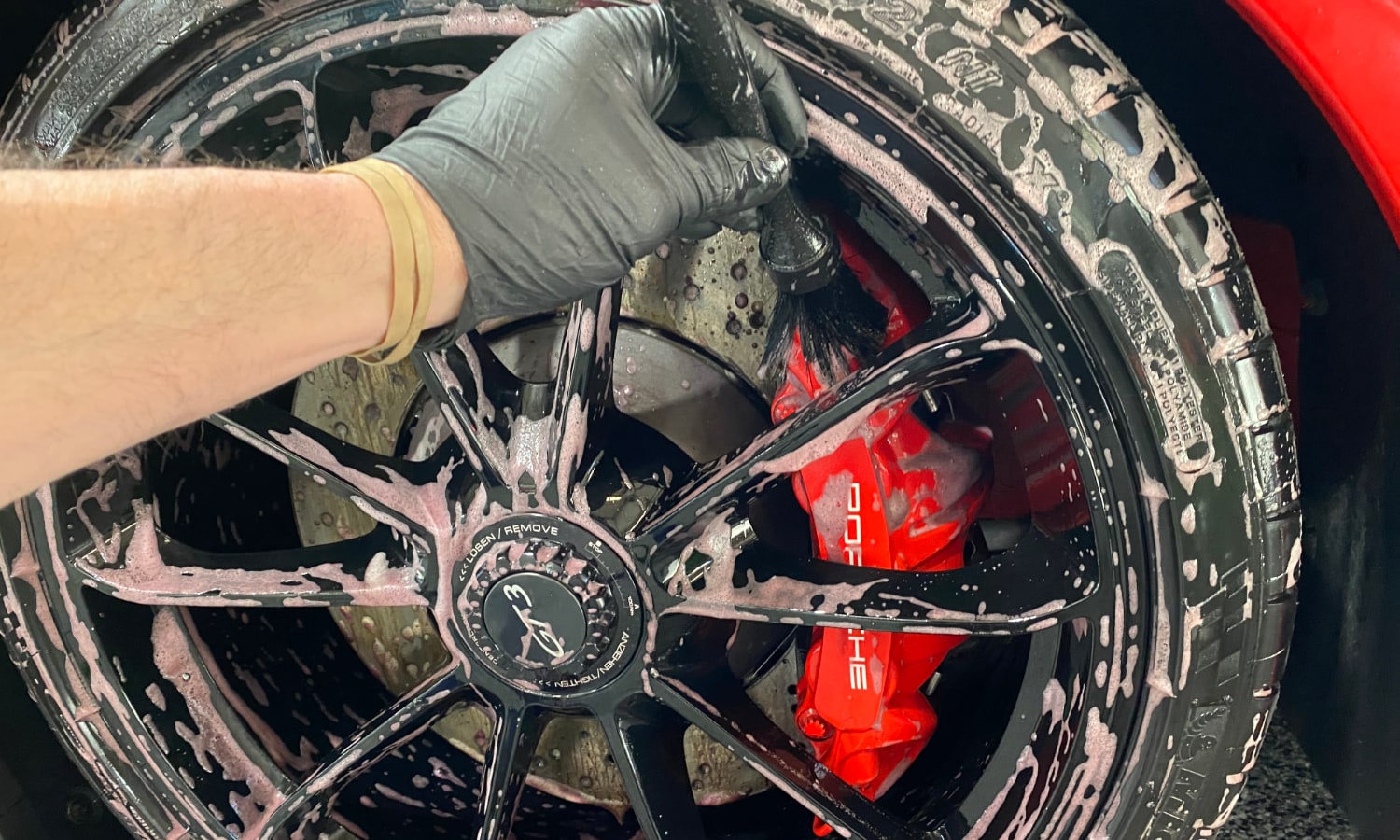
Chemical Decontamination
Is the process of spraying a chemical solution to dissolve and remove any iron fall-out. We initially focus on the wheels, wheel arches, lower body panels, the rear and anywhere iron fallout (aka rail dust) is present. These are literally iron particles stuck to the paint and rusting. If not addressed, they will quickly eat through the clear coat and significantly shorten the life of any paint. This is very common on brand new vehicles that are mostly transported on open rail cars, hence the name “rail dust”, coming from steel wheels grinding against steel rails. European and performance cars tend to shed a lot of metallic brake dust as well. Before proceeding, the vehicle is rinsed again.
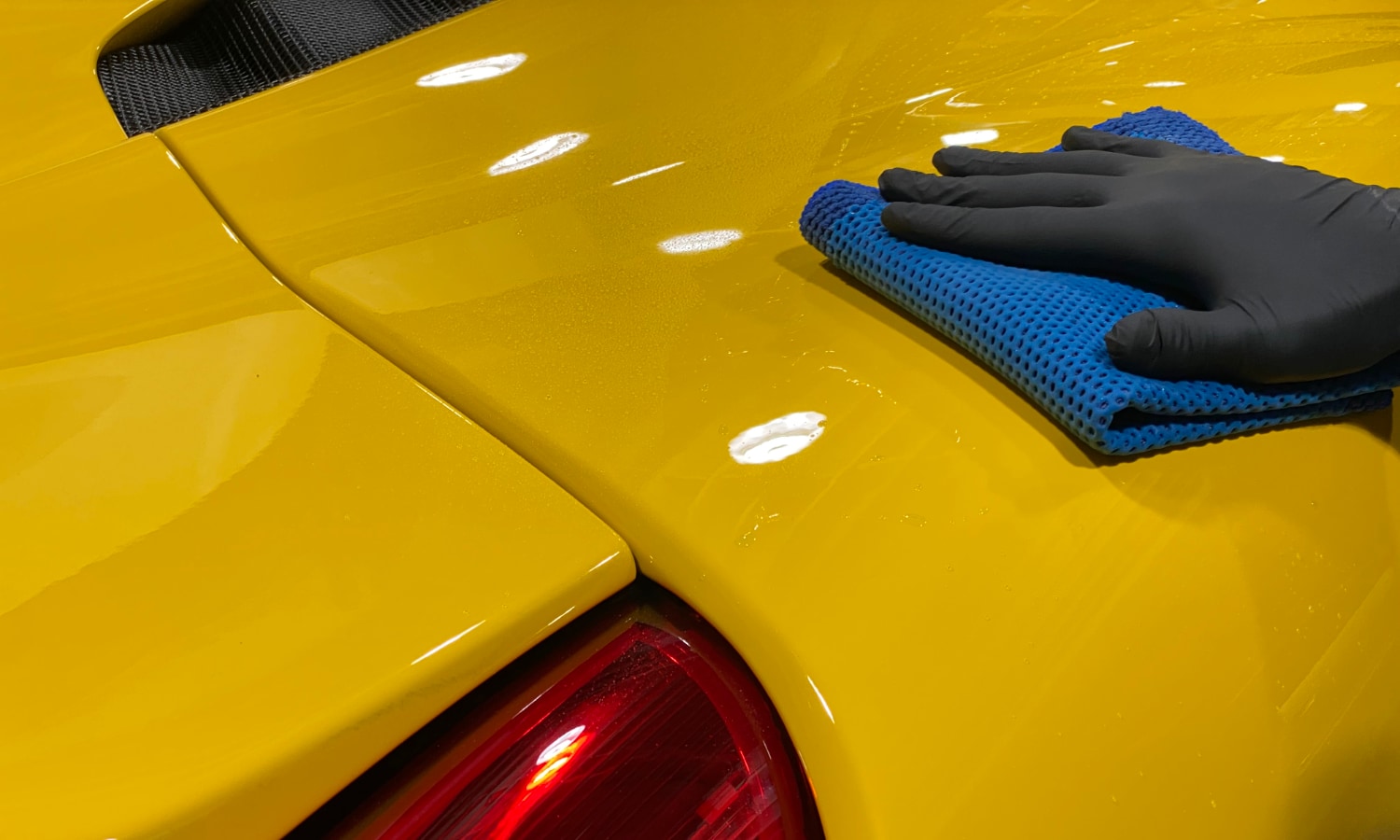
Mechanical Decontamination
Also known as “claying” and can be done with a traditional clay bar or synthetic clay towels / pads. The purpose is to remove any stubborn above-the-surface contaminants that didn’t come off in the prior steps. This is a vital step, because if omitted and you rely on polishing for removal, all you are doing is turning your polishing pad into a fine sander with these contaminants. This would be counterproductive, since you’ll be taking a major step back, doubling your correcting time, using more product / pads and ultimately removing unnecessary thickness of your clear coat.
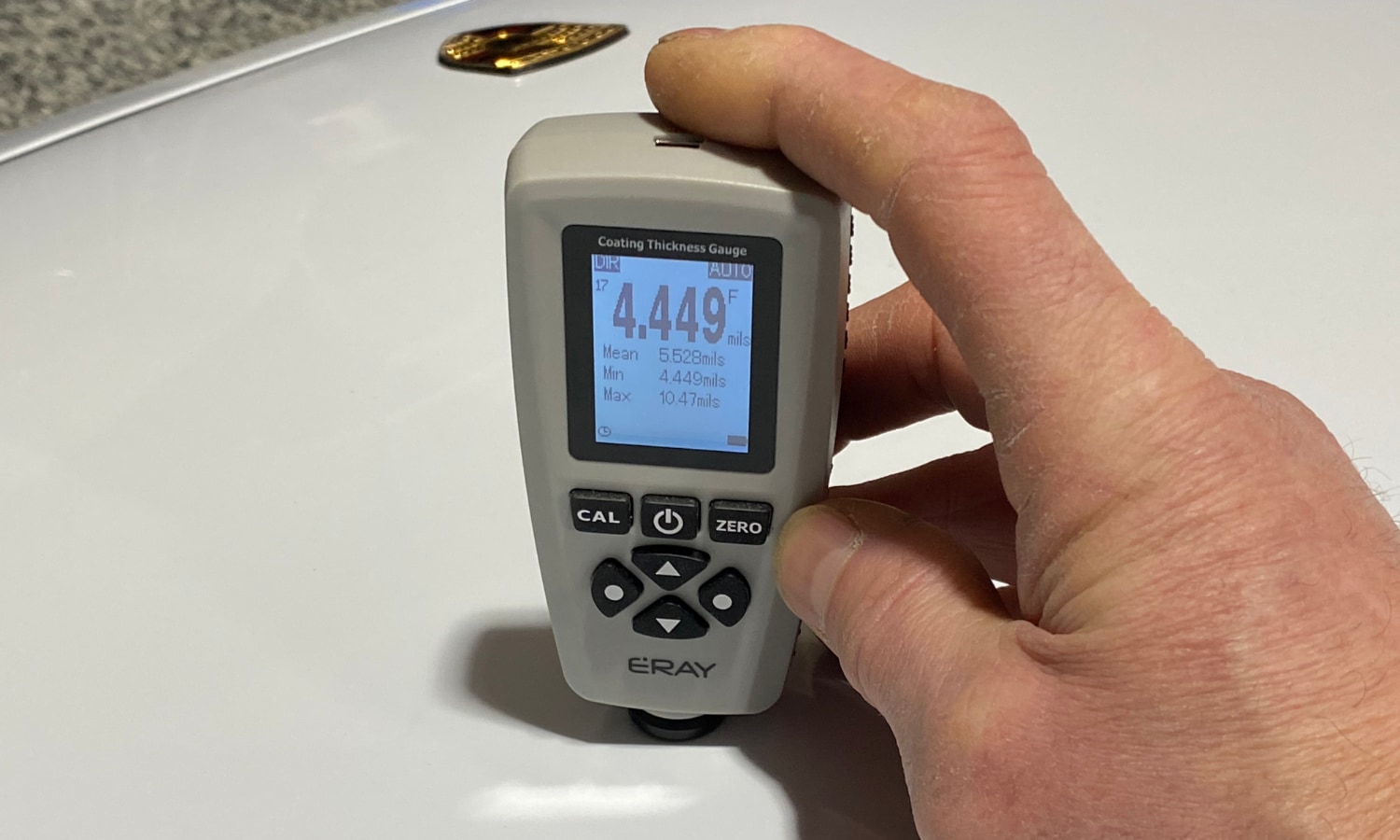
Evaluation
At this point the condition of the paint can be properly evaluated. During the preceding steps we make mental notes of any abnormalities or clues of re-paint, excessive fading or inconsistent texture. If there is a suspicion of a re-spray (and this is not uncommon, even on brand new cars), we confirm it with a digital paint thickness gauge. If the paint seems original and consistent, we start with a “test area”, usually the lower right rear area, since it usually presents the “worst case” scenario. Paint hardness varies tremendously and also comes into play during evaluation.
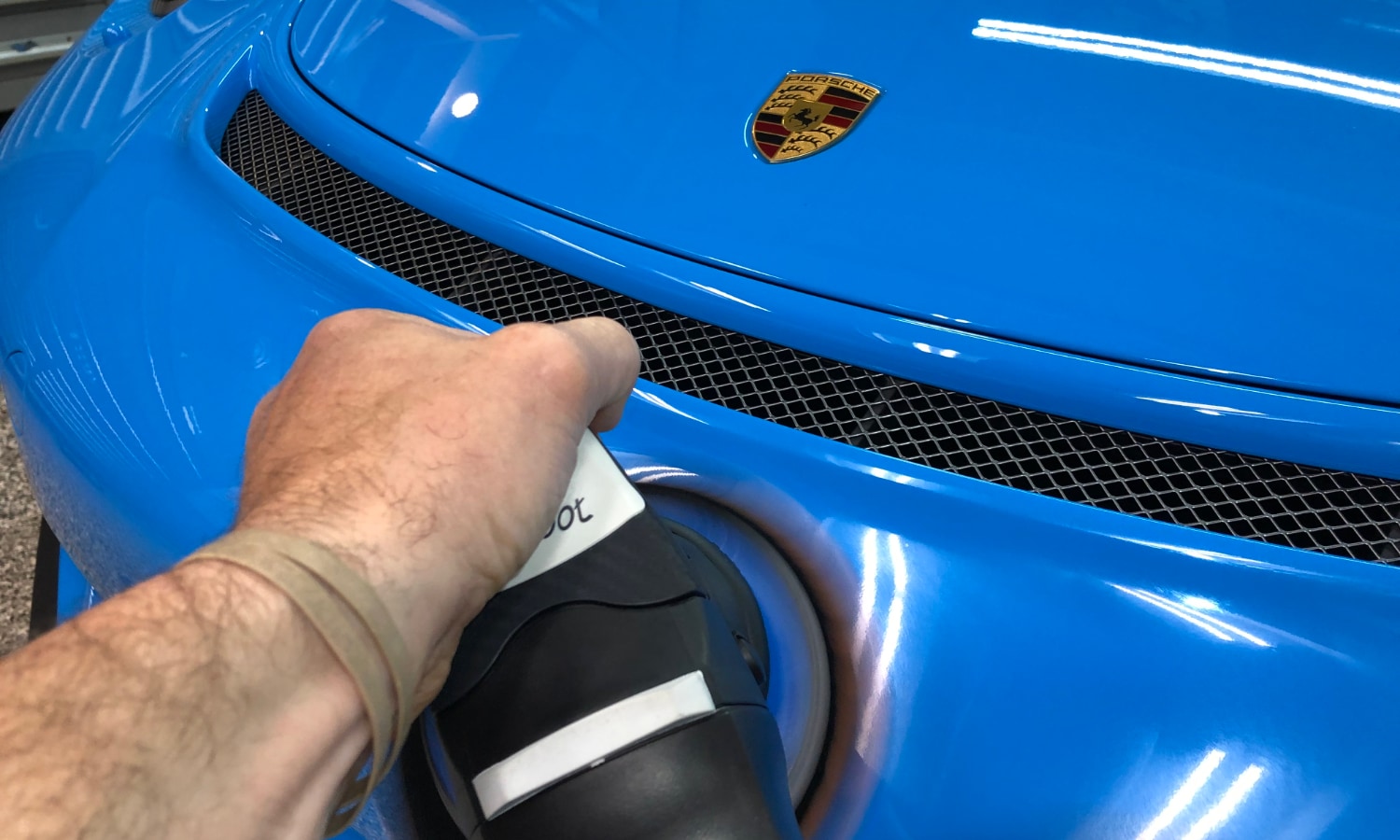
One-Stage, Two-Stage or Multi-Stage Correction
What does it mean? In short, it is how many steps it takes to get the results you want. We start with the least aggressive, a one-stage polish & pad. If we achieve satisfactory results we move on and complete the entire vehicle (this is also standard prepping procedure for any of our coatings or paint protection film). If we don’t get the desired results, we advance to a more aggressive two-stage compound and cutting pad. There are many different polish/ compound and pad combinations along with machine techniques to give many different results. It is about 5% trial, 90% experience and a bit of magic. There may only be a few select areas on a given project that require more than a one-stage correction. There is no one-size-fits-all approach, therefore each project can vary significantly.
Too Much Correction?
Today’s vehicles are painted with a multi stage paint process. Meaning, there is the primer, which provides the initial bond between the metal (or composite) of the vehicle and then, the actual color. Lastly there is the clear coat that provides the gloss, UV protection (against fading) and is the sacrificial layer that we manipulate during the paint correction process. Average (total) paint thickness is usually around 4-5mils (1000’s of an inch). The clear coat is about 1-2mils of that, so the more you remove to achieve that blemish free surface, the less protection is left for the actual paint.
Ceramic Coatings
There is a lot of confusion about ceramic coatings and researching it online can make your head spin. Here is a simple analogy: Think of it as kind of a permanent wax. We say this, because we all know how nice a freshly waxed car looks and feels, but unfortunately wax only lasts a matter of weeks on a daily driver. Then there are synthetic sealants, which are great and extend longevity to several months. A lot of these sealants are sold as spray-on consumer grade ceramic coatings, but don’t have the results of professionally installed coatings. A genuine high grade ceramic coating will outperform any of these by a number of years.
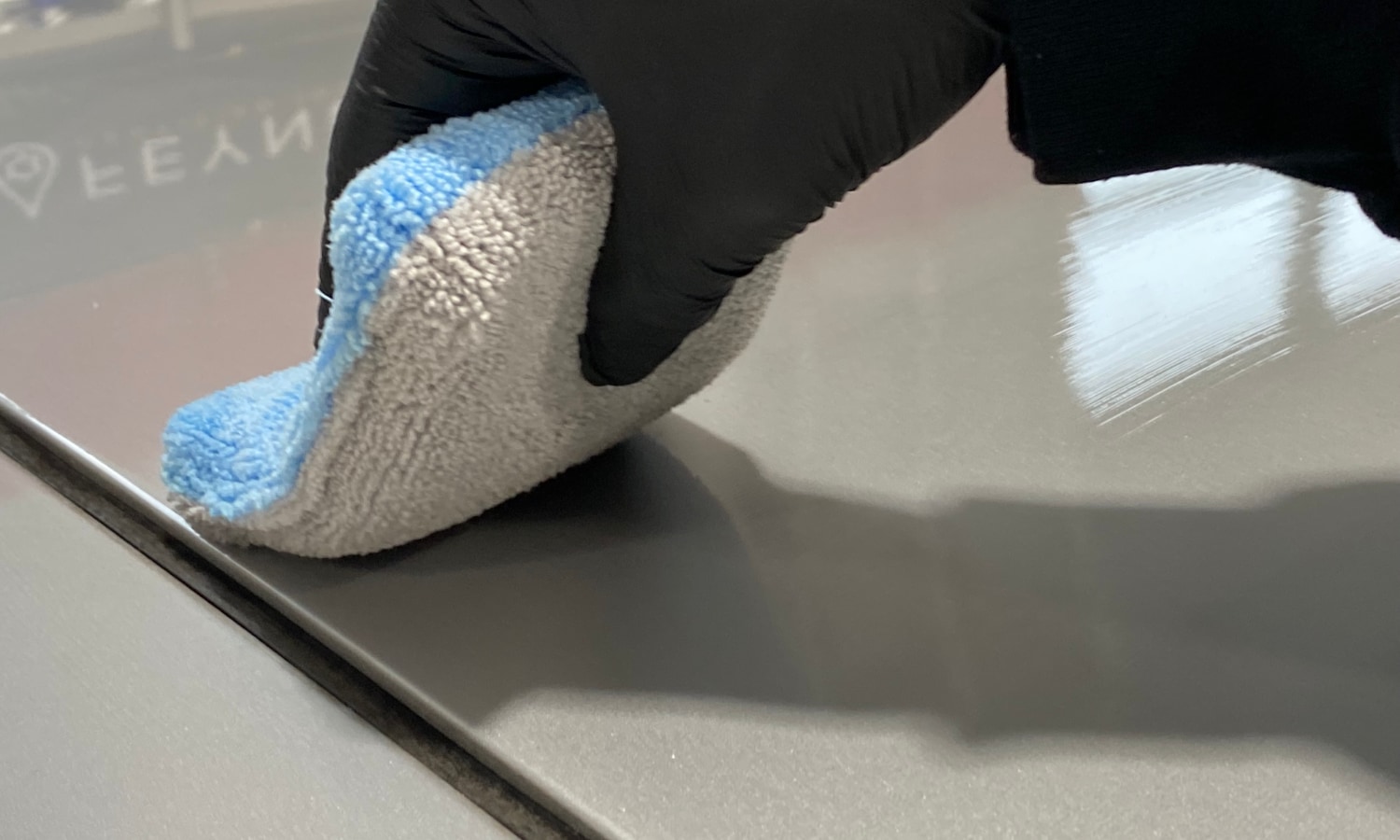
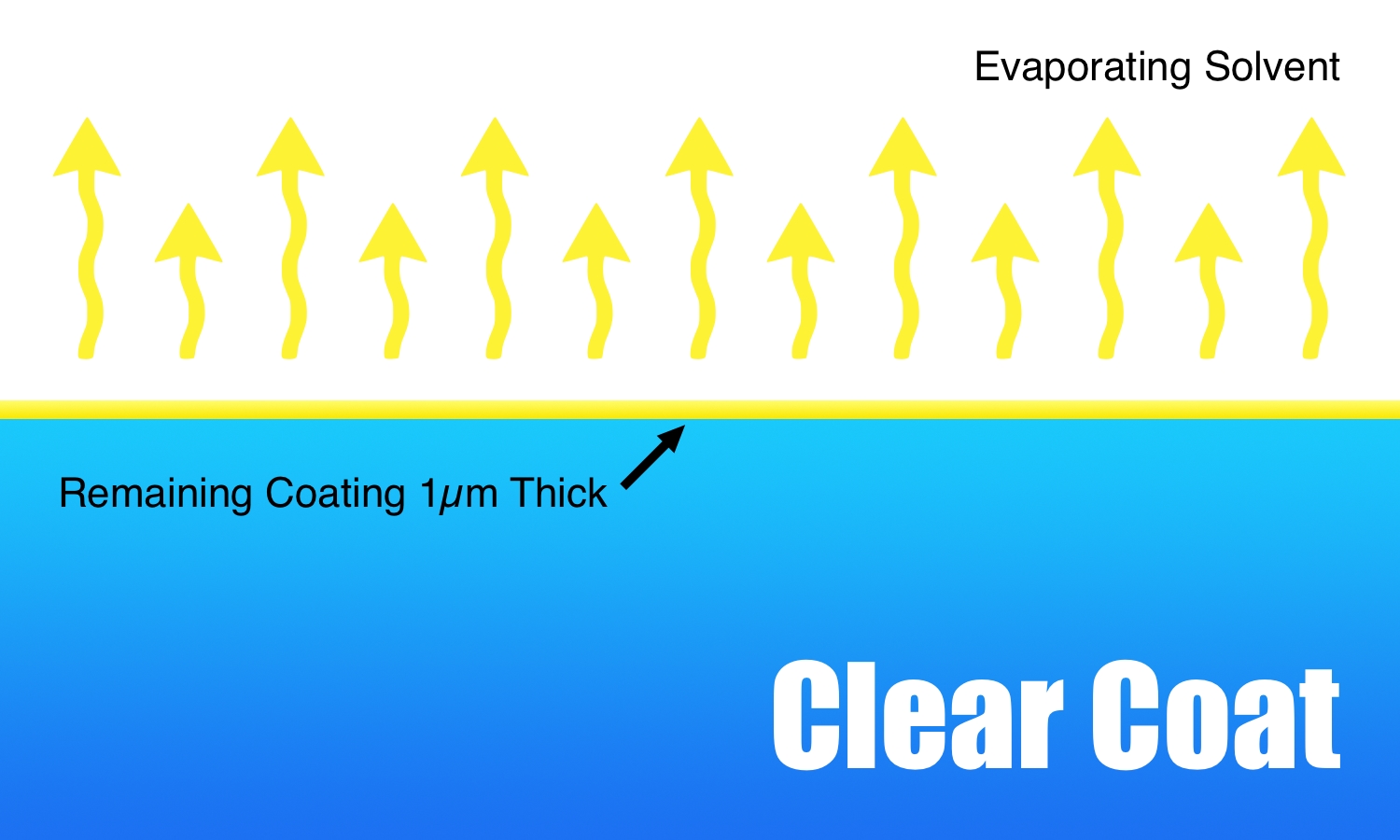
Solvents vs Solids
It’s all about the ratio, if there are a lot of solvents, there are not many solids to actually bond and protect the paint. With consumer grade coatings, this makes for an easy, risk free application with long working times and limited chance of messing up. The reason professional grade coatings are only sold through certified and trained professionals is due to the high solids content and lack of solvents. Working with these products and achieving beautiful, long-lasting results, requires experience, skill, patience and strategic time sensitive execution. At Car Done we pride ourselves in using only the highest quality ceramic coatings.
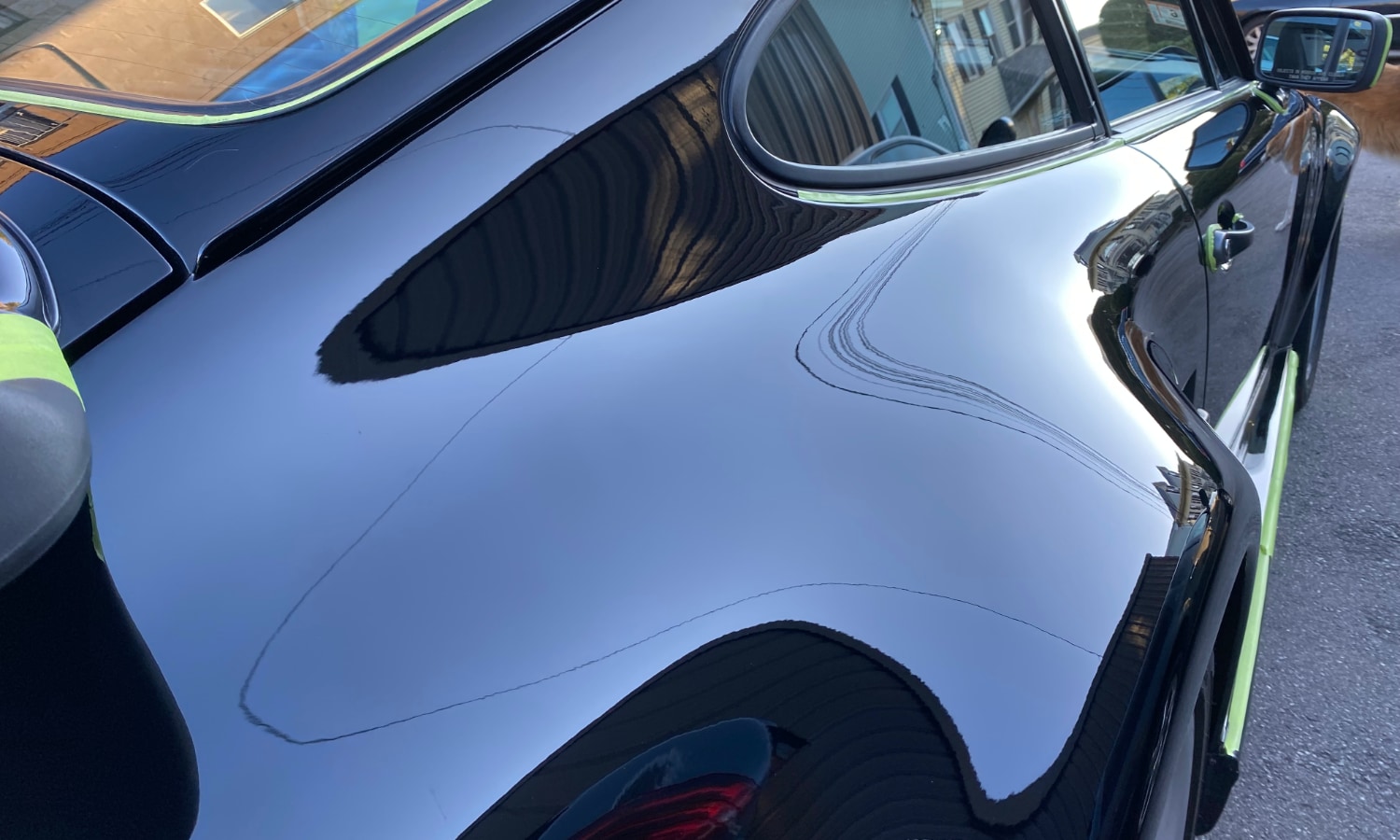
What You Can Expect
Generally, the whole process usually takes about three to four days with a one-stage paint correction (longer with multi-stage or larger vehicles). All our ceramic coating projects undergo a thorough preparation (read more about it under paint correction). This is usually completed in the first day or two. After that we apply multiple coats of ceramic (process below), each with its proprietary function followed by a 24-hour indoor cure time and a final inspection. We recommend that you wait 10 days before exposing your vehicle to any chemicals. Rain and regular dirt are fine.
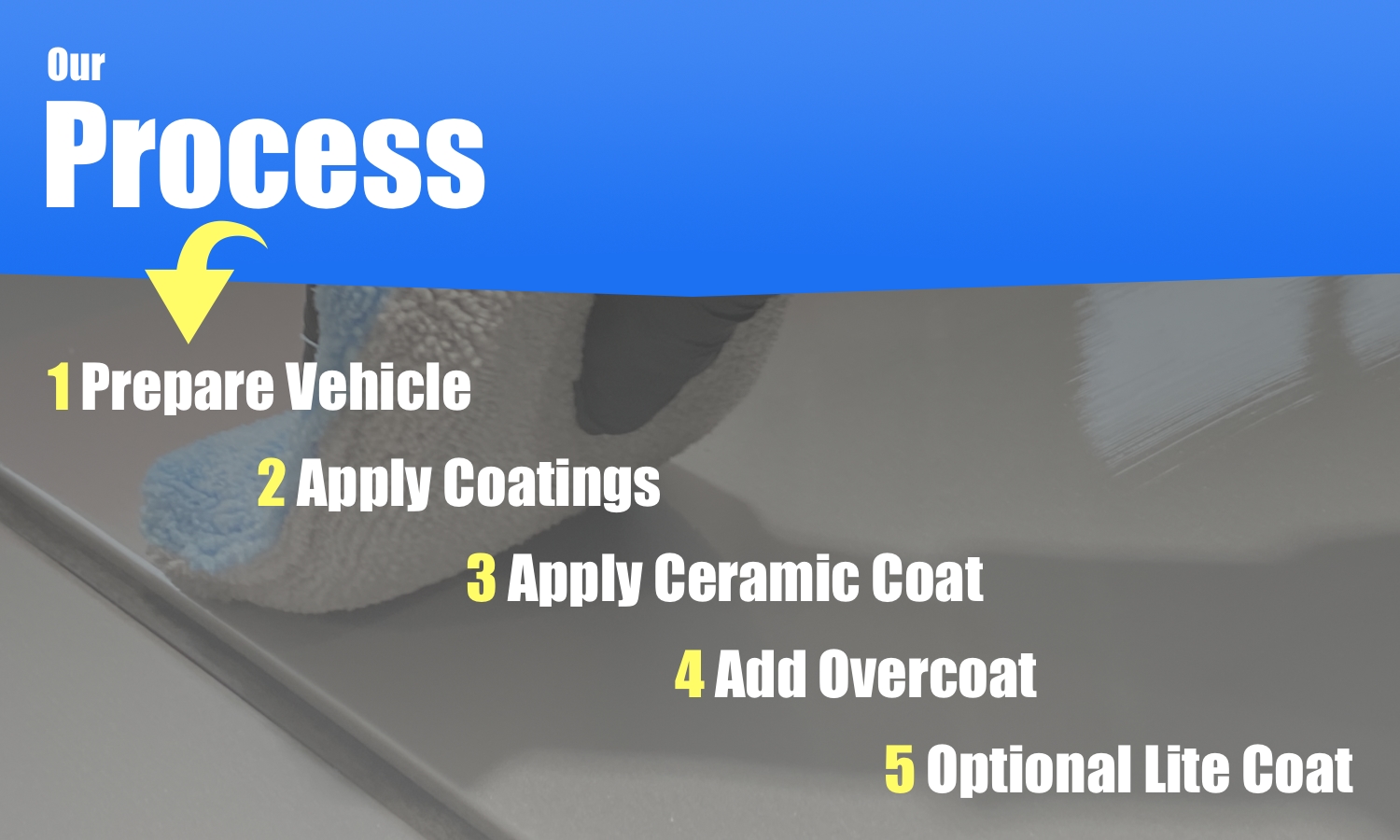
Our Process
Once the vehicle is properly prepared, it is meticulously cleaned with a panel prep solution to remove any of the polishing oils. The coatings are then applied in several layers. In some cases, mostly with single stage paint (meaning no clear coat), a primer is applied first to aid in the uniform bonding. Next the actual ceramic coating goes on. This is done section by section in a very strategic manner to achieve uniform coverage and then leveled at the correct flash time to remove any excess that otherwise shows up as high spots, rainbows or streaks. Once it has cured, we apply a top, or overcoat, which does less for protection, but really makes it glossy. Last, but not least we offer the optional Lite coat, which gives it that super smooth, slick feel and can be reapplied on a yearly basis.
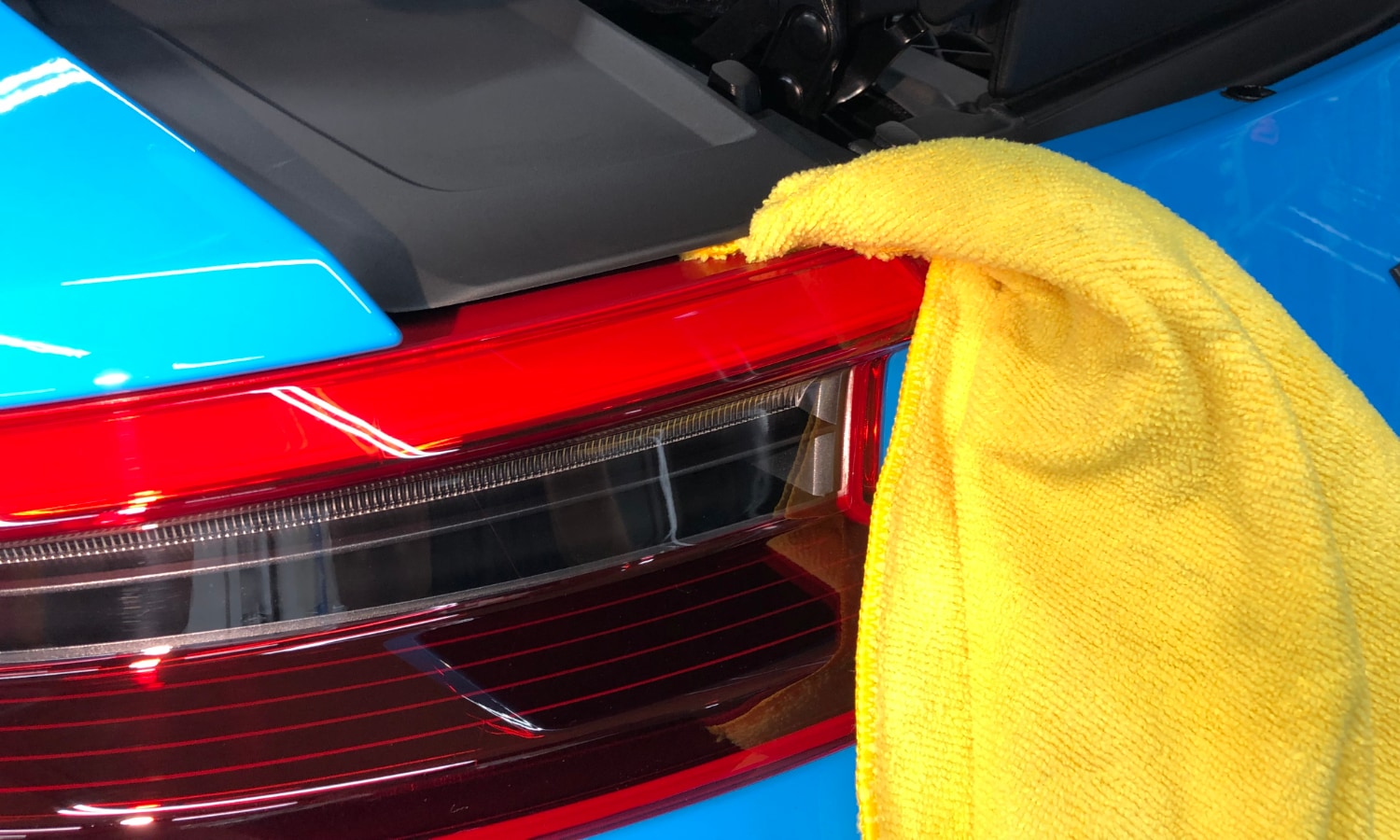
Care and Maintenance
Hand washing with proper soap is recommended, followed by drying with a drying aid. But we know not everyone has time or space to do that. Touchless car washes, even though some have pretty harsh chemicals, are the next best option to get the worst grime off (between hand washes). The reality is, we have customers with cars, we coated many years ago that go through car washes on a regular basis and they still look really good.
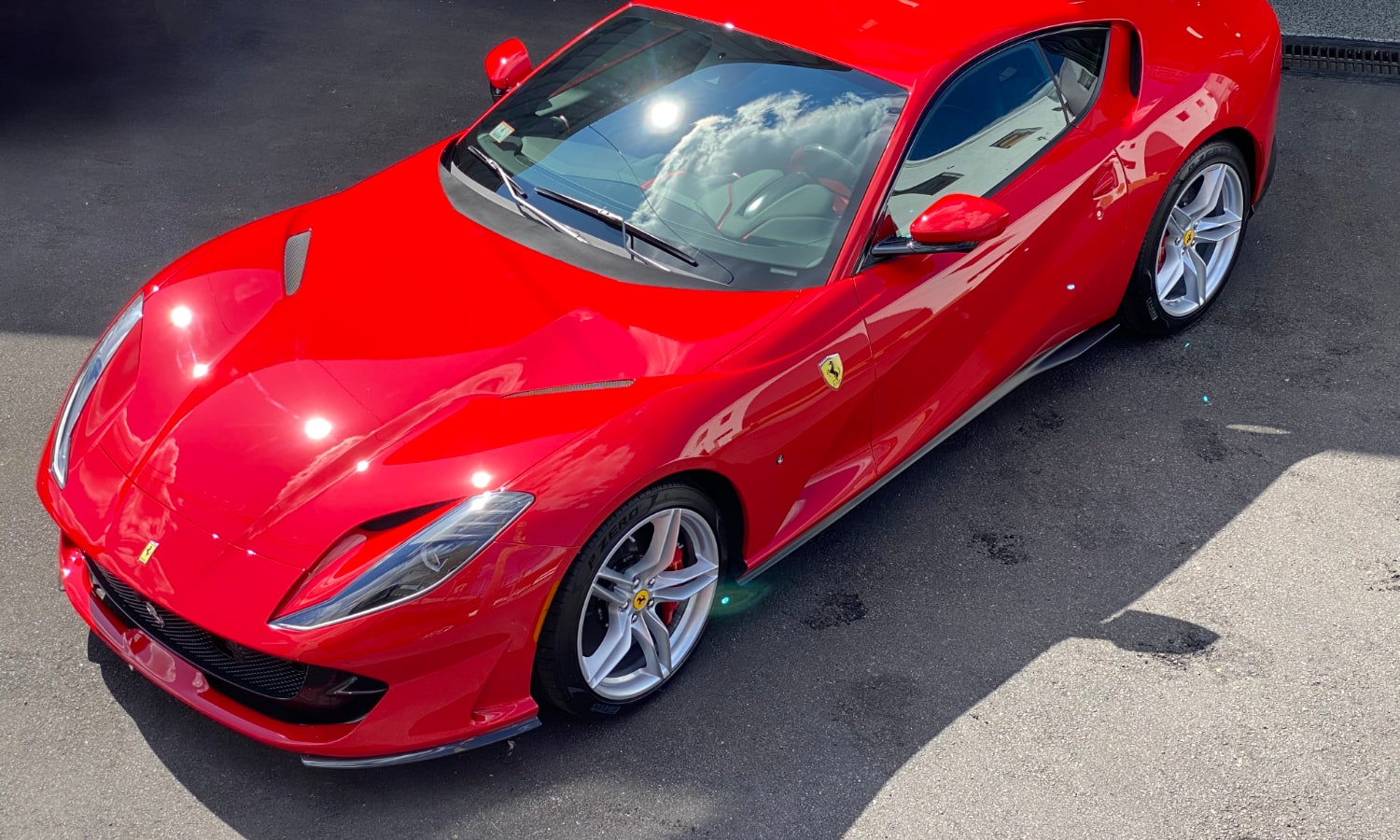
Applied over PPF
Yes, ceramic coatings can be applied over paint protection film. We actually recommend it, since you want that same great shine and the hydrophobic effects to repel any dirt or debris between washes.
What it is Not
A lot of ceramic coatings are oversold, stating “protects against scratches”, “lasts forever” and “never wash your car again”. This is not entirely true. Though ceramic coatings do add a layer of protection, it is on a microscopic level to mitigate only the lightest of scratches, but it won’t shield against any significant damage. Some brands claim to last up to five, seven, even ten years. But realistically, daily drivers in New England are exposed to the worst-case scenario, so don’t expect best-case results. Ceramic coatings do create a hydrophobic layer that makes it harder for contaminants to stick to and therefore much easier to remove, but you still have to wash your vehicle.
Paint Protection Film (PPF)
This is a clear, stretchable film that adheres to the painted surface and guards against rock chips and minor abrasions. Inferior versions have been around for a long time, but eventually suffered from yellowing, cracking and glue drying to the point that the film looks worse than the damage it was designed to prevent. As PPF’s evolved over the years, these issues were addressed and today’s high-quality films can look pretty amazing and last a long time. PPF was originally developed for the military to protect helicopter rotor blades against damage from flying debris. In our automotive world, it serves as a sacrificial layer for the beautiful paint beneath.
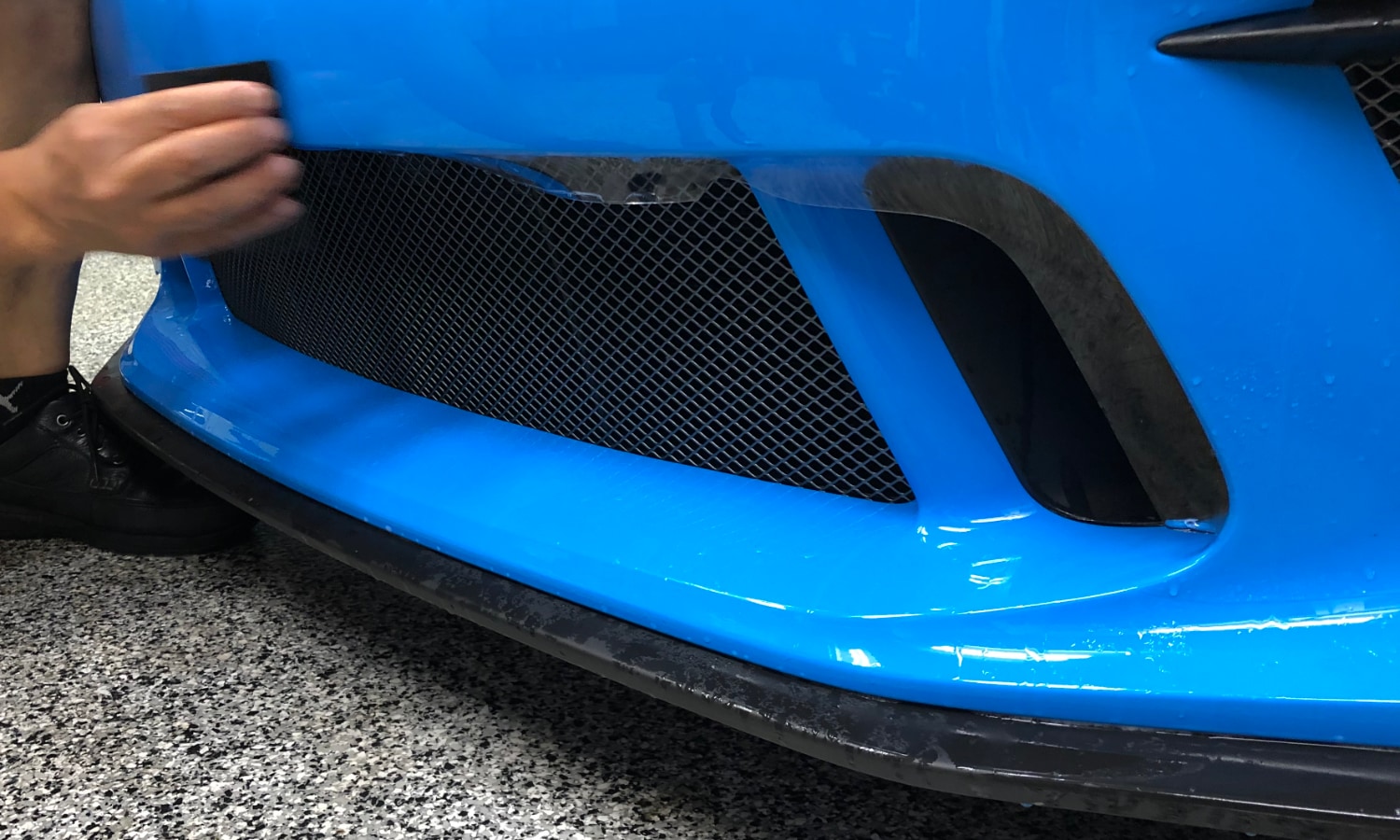
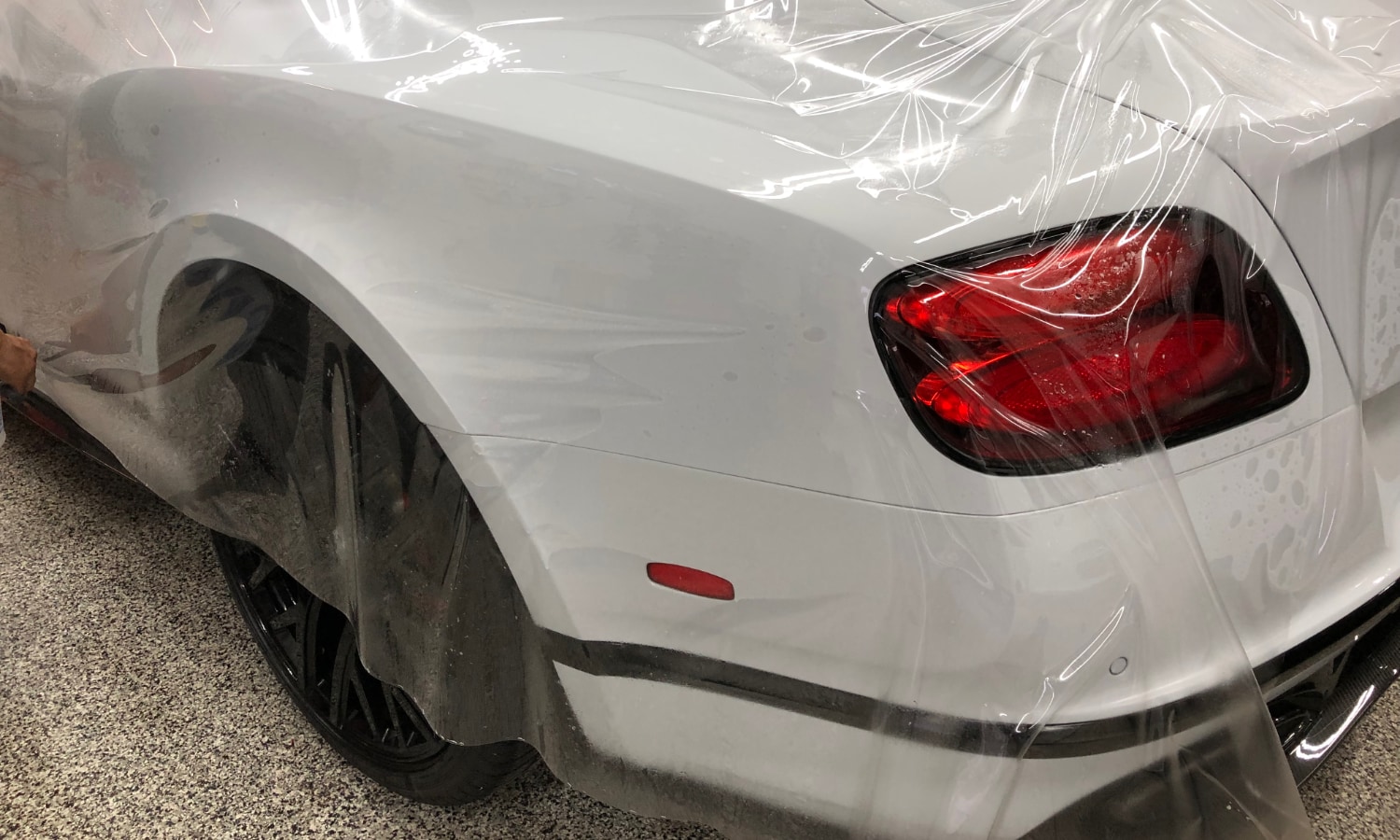
How much to Film
This depends on budget and the level of protection you are seeking. At minimum, we cover the front of the vehicle known as the “high impact areas”, like the bumper, fenders, full hood and mirrors. A lot of people add the rear bumper as well to protect against damage from parking or loading. For ultimate protection we recommend covering the entire vehicle.
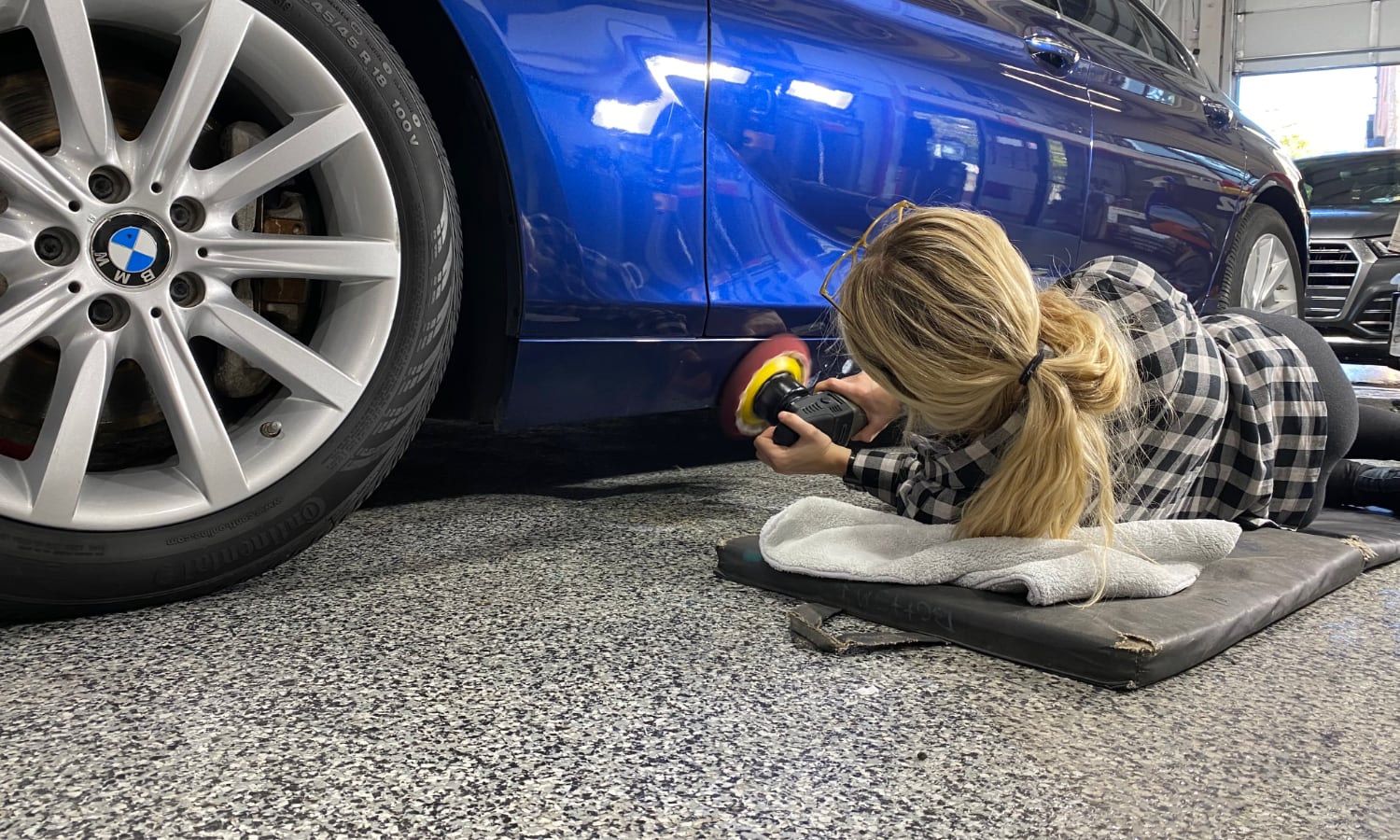
Why Car Done does it better
All our Paint Protection Film projects undergo a thorough preparation (read more about it under paint correction). Car dealers and most installers just give it a quick wipe and use pre-cut templates that cover about 95% of any given panel. This is the quick and easy way to install PPF. Unfortunately, it leaves the film just a bit shy of the edges creating a visible seam that looks ugly and is subject to peeling and collecting dirt with the exposed adhesive. Whenever sensible, we remove badges, lights and trim to avoid having that “cut around” look. On panels like the hood and fenders, we oversize the film along the edges and wrap them around to the back side to create that seamless look. There is no noticeable difference between panels that have film and panels that don’t.
Damaged Film
Sections can be replaced if needed. For minor abrasions, the film has a self-healing feature that activates with heat from the engine, hot sun or a heat gun to make minor scratches disappear without the need for replacement. Most insurance companies will cover the cost of PPF replacement, should a panel need to be repaired. We do recommend letting any new paint cure for 30 days (due to the off-gassing), before applying new film.
Window Tinting
Not only does tinting your vehicles windows create a unique look, it also provides privacy and UV protection to extend the life of your vehicle’s interior. On hot days it also lowers interior temperatures creating a much more comfortable cabin. We only use high grade ceramic film known for its clarity, durability and resistance to fading. We also offer a lifetime warranty against any defects, bubbling or peeling and supply a simple maintenance sheet.
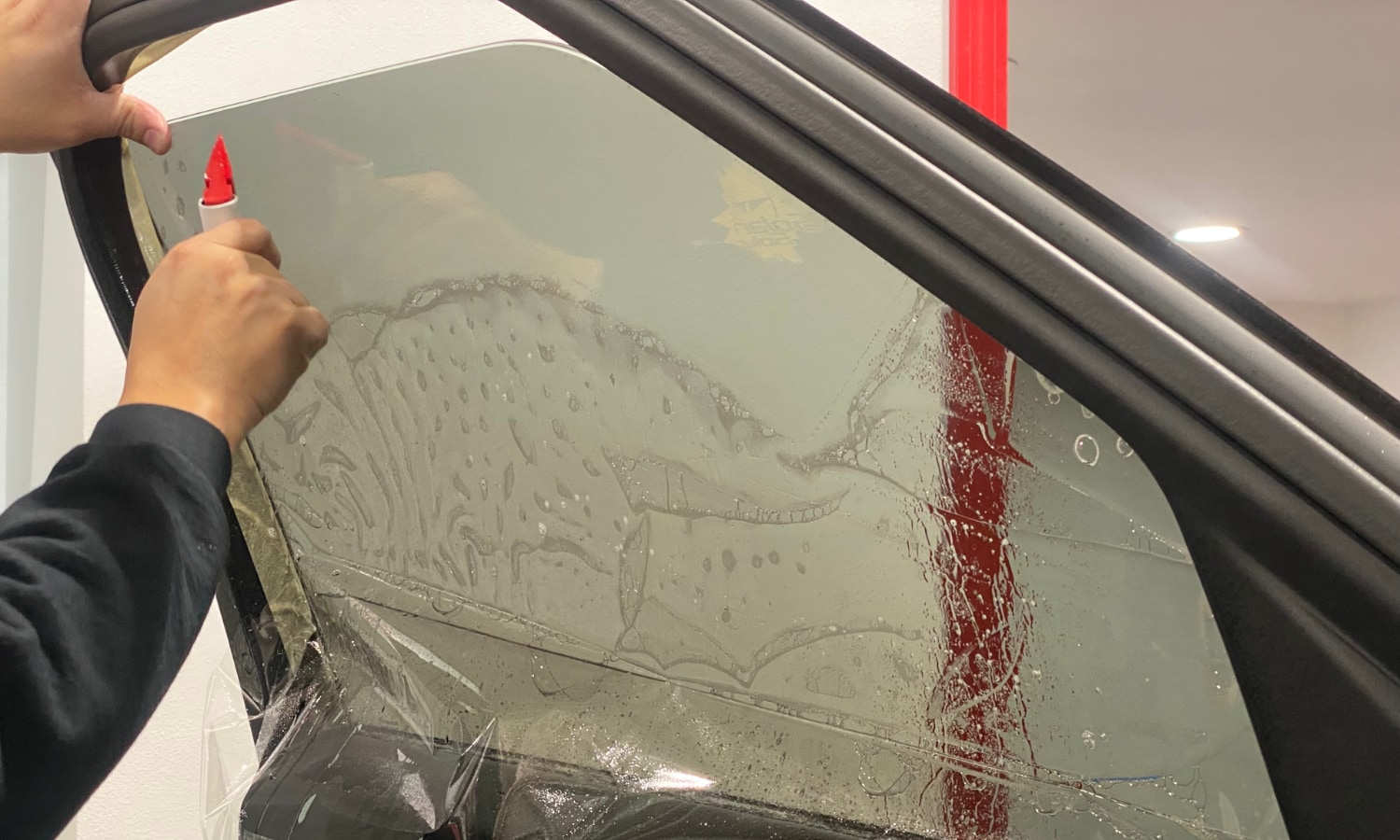
Seasonal Car Storage
We are now offering interior storage for small to medium sized cars. All spaces are conditioned, dry and secure. Winter storage is a flat fee based on six months to create a hassle free drop off and pick up experience with only a few days’ notice. Every vehicle gets hand washed, dried and “checked in”, meaning we analyze the battery condition and tires. The tires are then inflated roughly 10 psi over their recommended value, to mitigate any flat spots. Computer controlled Battery maintainers are supplied and connected to condition the battery and light car covers are used to keep off any dust.
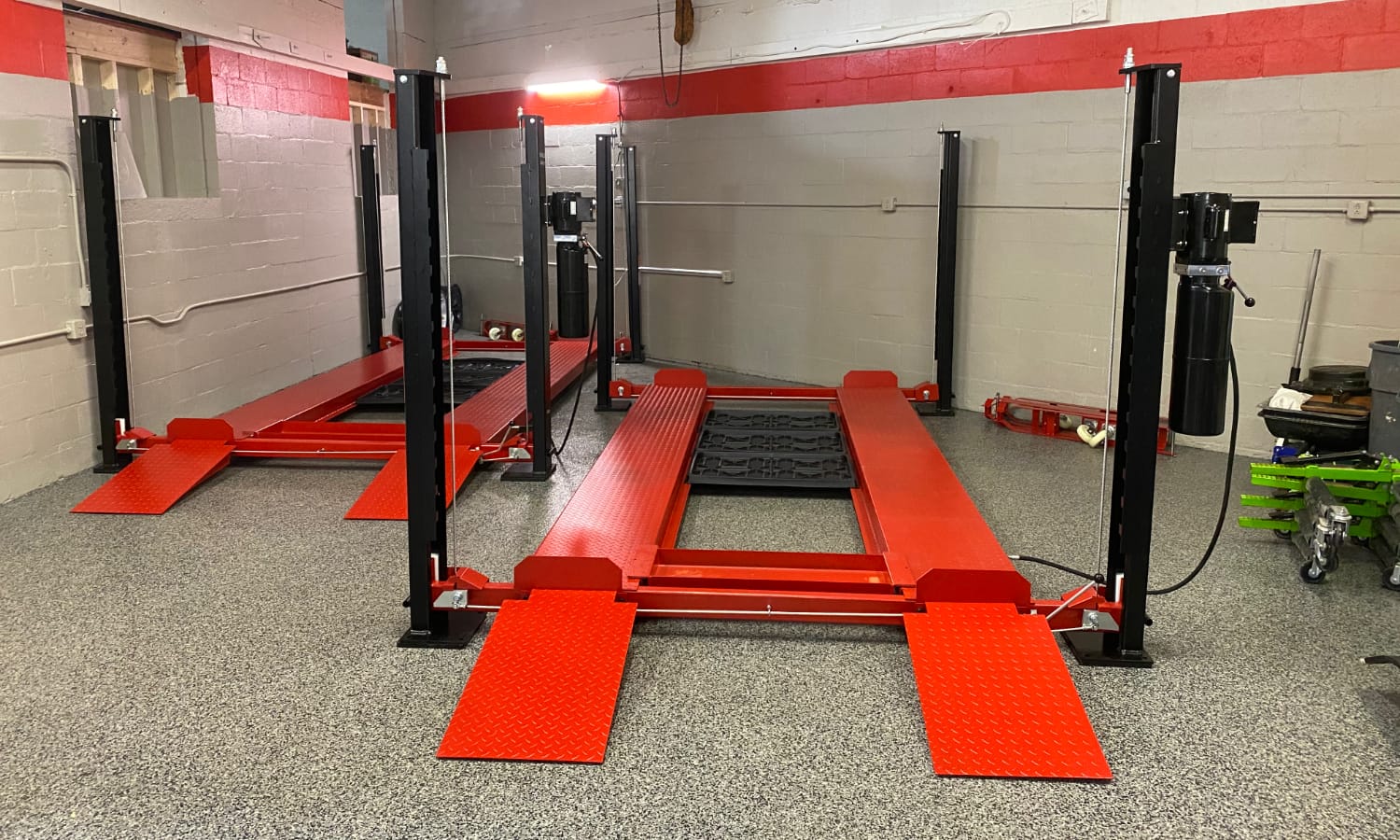
Turo Vehicle Rental
If you need a loaner while we are working on your vehicle, or just want to enjoy a convertible for the weekend, we have several options available on the Turo platform. If you’re not familiar, this is a peer to peer car sharing app. Once you download it and fill out your credentials, you can select one of our available vehicle by zooming in on our location at 120 Elm St. in Watertown or click here to go directly to see the available vehicles.
